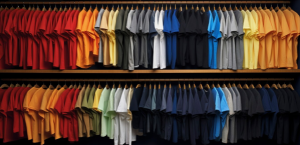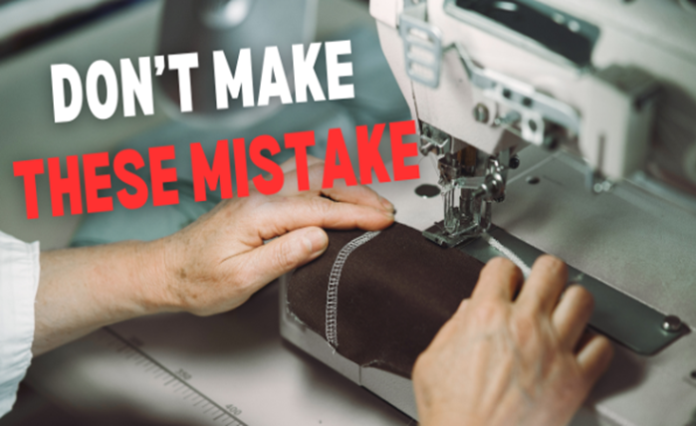Choosing the right manufacturing partner is a big decision for any fashion brand. It may look like a small step, but one wrong choice can lead to serious problems in production, quality, and timelines. To help avoid setbacks, it’s important to understand common mistakes and how to make smarter decisions that support smooth, long-term partnerships.
Common Mistakes When Choosing an Apparel Manufacturing Partner
1. Why Choosing the Wrong Partner Can Be Costly
Inconsistent product quality is one of the first signs something’s not right. Even if it’s not immediately obvious, small differences in stitching, sizing, or finishing can make your products look less professional. This hurts your brand’s image and customer experience.
Lack of experience is another issue. Some factories may accept your design files, but struggle to turn them into well-made products. They might not flag design risks or might recommend the wrong materials—leading to poor samples that don’t match your vision.
Poor development support slows everything down. If your manufacturer lacks a skilled sample room or pattern-making team, you may need to go through several rounds of revisions. This wastes time and delays your launch.
Fabric and trim sourcing can also become a bottleneck. Without a team that understands fabric performance, MOQs, or lead times, your production can get delayed—or worse, move forward with materials that aren’t right. This is especially risky in technical categories like activewear, where experienced activewear manufacturers understand things like stretch recovery and moisture-wicking standards that less specialized partners may miss.
Over time, these problems wear down your internal team. You’ll spend more energy fixing errors, managing extra tasks, and trying to recover from delays that could’ve been avoided with a better partner.

Consistent product quality is one of the first priority for bulk apparel manufacturing
2. Common Mistakes to Avoid
Focusing only on price is one of the biggest traps. It’s tempting to go with the cheapest option, but low prices often mean poor service, weak communication, or lower-quality work. What looks affordable upfront can cost more in the long run.
Failing to check certifications and compliance is another frequent error. Without valid certifications like BSCI, OEKO-TEX, or GOTS, you risk working with factories that don’t meet required safety, labor, or environmental standards. This can lead to serious issues if you’re selling in markets with strict regulations.
Overlooking production capacity and factory scale is risky. Some factories say yes to every order but don’t actually have the systems or staff to deliver. This leads to missed deadlines, rushed production, and quality problems.
Ignoring communication habits early on is a red flag. If a manufacturer is slow to reply, vague, or unorganized in the beginning, they’re likely to continue that behavior later—especially under pressure.
Relying on verbal agreements without clear documentation often ends badly. Without signed tech packs, timelines, cost breakdowns, and quality standards, miscommunications are bound to happen. Verbal promises are hard to enforce, and when something goes wrong, you’ll have little to fall back on.
Focusing only on price is one of the most common traps
3. How to Choose the Right Manufacturing Partner
Start by evaluating their experience and specialization. Do they have a history of making your type of product? Check their website, request case studies, or ask for a client portfolio. Look for proof of technical skill—like knowledge of advanced construction, specialty fabrics, or sustainability practices.
Verify their quality standards. Ask for certifications such as OEKO-TEX, GOTS, WRAP, or ISO. Request past inspection reports or QC processes. A trustworthy manufacturer should be ready to share these without hesitation.
Choose clothing manufacturer with gloabl certifications like OEKO-TEX, GOTS, WRAP, or ISO
Transparency and communication can often be seen in the early conversations. Notice how fast they respond, whether their answers are clear, and if they ask thoughtful questions. Request a walkthrough of their production process and how they handle problems like delays or rework. These are traits you’ll often find in ethical clothing manufacturers, who prioritize clear communication and accountability from the start.
To check R&D and development capabilities, ask for samples of previous tech packs, improvements they’ve suggested, or how they handle design revisions. Try sending one of your own designs and see how they interpret it.
For a closer look, request a factory profile with videos or photos of their facility, including the sample room, machines, and production lines. If possible, schedule a virtual or in-person visit. Ask for brand references and look up real client reviews. Visiting or touring helps you see how things really work—from fabric storage and quality control to final packaging.
In conclusion, choosing the right manufacturing partner is about more than just production,it’s about finding someone who understands your brand, respects your standards, and can grow with you. Taking the time to choose carefully helps avoid costly mistakes, strengthens your supply chain, and gives your brand the support it needs to succeed globally.

